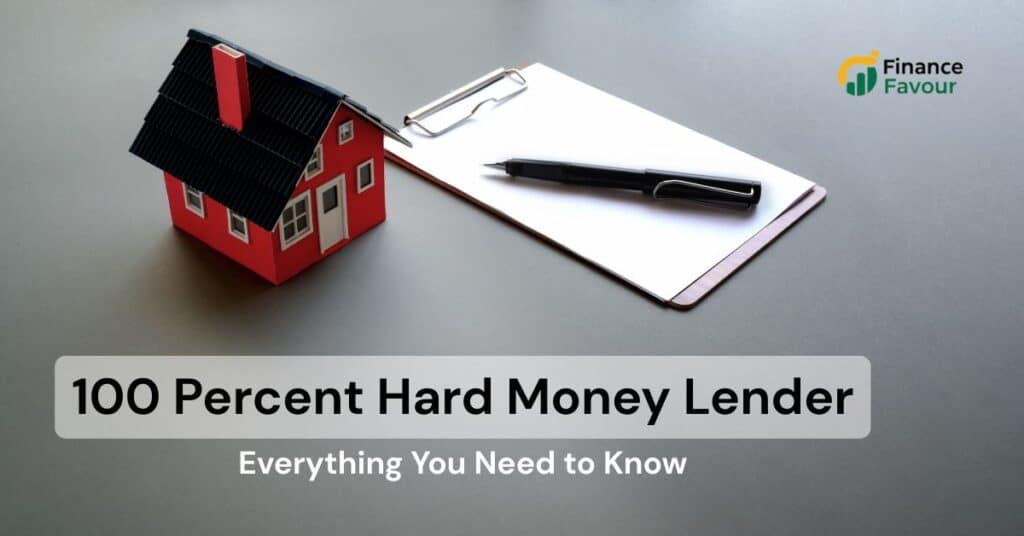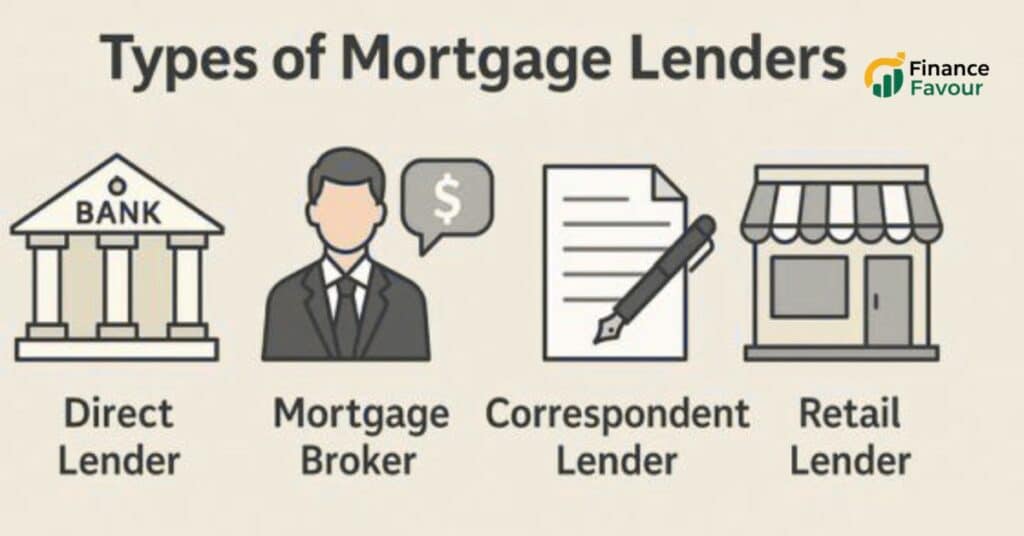Looking for the best mortgage lenders in May 2025? Discover top-rated lenders offering competitive rates, low fees, and tailored loan options for first-time buyers, veterans, and those with less-than-perfect credit. Embarking on the journey to homeownership is both exciting and daunting. One of the most critical decisions you’ll make is choosing the right mortgage lender. With a plethora of options available, each offering different rates, terms, and services, it’s essential to navigate this landscape with informed confidence.
In May 2025, the mortgage industry continues to evolve, with lenders introducing innovative programs to cater to diverse borrower needs. Whether you’re a first-time homebuyer, a veteran, or someone with less-than-perfect credit, there’s a lender out there tailored for you. This guide aims to spotlight the best mortgage lenders of the month, helping you make an informed choice that aligns with your financial goals.
Best Mortgage Lenders for First-Time Buyers
Truist Bank
For those stepping into the housing market for the first time, Truist Bank stands out as a top choice. Their commitment to making homeownership accessible is evident through their Community Homeownership Incentive Program. This initiative offers eligible borrowers lender credits, low or no down payments, and even waives mortgage insurance in qualifying areas.
Medical professionals can also benefit from specialized mortgage options, which may include lower down payments and the exclusion of student loans from debt-to-income calculations. However, it’s worth noting that while Truist offers these advantages, their customer satisfaction scores have room for improvement, as indicated by recent studies.
Top Online Mortgage Lender
Better Mortgage
In the digital age, convenience is paramount. Better Mortgage embraces this by offering a 100% online mortgage experience. Their platform allows borrowers to access a full suite of conventional and government-backed loans for both purchasing and refinancing.
One of their standout features is the “One Day Mortgage,” enabling applicants to receive a loan commitment within 24 hours of submitting financial information. Additionally, Better Mortgage is known for its competitive interest rates and lower-than-average loan fees, making it an attractive option for tech-savvy borrowers seeking efficiency and savings.
Leading Lender for Low/No Down Payments
Chase Bank
Chase Bank’s DreaMaker mortgage program is a beacon for those seeking low down payment options. With the possibility of putting down as little as 3%, combined with relaxed credit qualifications, it opens doors for many aspiring homeowners.
Beyond the low down payment, Chase offers grants up to $7,500, which can be applied toward down payments or closing costs. They also guarantee a closing within three weeks, or eligible borrowers receive $5,000. However, potential applicants should be aware of income limits associated with the DreaMaker program.
Best VA Loan Provider
Navy Federal Credit Union
For veterans and active-duty military members, Navy Federal Credit Union is a top-tier choice. Their VA loan offerings come with several unique benefits:
- No-Refi Rate Drop: Allows borrowers to secure a lower mortgage rate six months post-closing without additional closing costs.
- Rate Match Guarantee: If another lender offers a better rate on the same loan, Navy Federal will match it or pay $1,000 after closing with the other lender.
- Special Freedom Lock: Offers an interest rate reduction of up to 0.50% if rates decrease before closing.
These features, combined with their commitment to serving the military community, make Navy Federal a standout in the VA loan space.
Top FHA Loan Lender
Pennymac
When it comes to FHA loans, Pennymac earns its spot at the top due to its consistent delivery of low-interest rates and robust customer-centric incentives. FHA loans, designed for buyers with lower credit scores and smaller down payments, are ideal for many first-time or lower-income homebuyers. Pennymac capitalizes on this niche by providing a 5-star mortgage rate rating in recent industry analyses.
One of the most attractive features Pennymac offers is a $2,000 credit toward closing costs if you refinance within three years of your initial loan. This perk not only reduces future expenses but also demonstrates the lender’s focus on long-term relationships with borrowers.
In addition to financial benefits, homebuyers can receive between $350 and $9,500 in post-closing cash rewards when they use a Pennymac-affiliated real estate agent. This additional incentive can go a long way in covering moving costs or furnishing a new home.
However, it’s important to dig into the details. While Pennymac accepts credit scores as low as 580 for FHA loan eligibility, their advertised interest rates are based on higher credit scores typically around 680.
This discrepancy means you could see a higher rate if your score is on the lower end of the spectrum. Furthermore, while their digital tools are intuitive, customer satisfaction ratings in recent J.D. Power studies show room for improvement.
Pennymac excels in affordability and accessibility, but prospective borrowers should approach with a realistic view of how their personal credit situation might affect the actual terms they receive.
Best USDA Loan Lender
U.S. Bank
If you’re looking to buy a home in a rural or suburban area and meet certain income requirements, a USDA loan can be an excellent low- to no-down-payment option. In this space, U.S. Bank dominates as one of the most reliable lenders for USDA mortgages, offering both competitive rates and national accessibility.
What makes U.S. Bank a standout is not just its loan offerings, but its commitment to community investment. The bank has pledged to provide $100 million over five years in down payment assistance and fee waivers for underserved families a bold and welcome initiative in the mortgage lending world.
U.S. Bank offers USDA loans in all 50 states, and the application process is highly flexible. You can start online, by phone, or visit one of their many branches to speak directly with a loan officer. However, it’s worth noting that in states like Alaska, Alabama, Louisiana, and Vermont, you’ll need to go through the online or phone route since physical branches aren’t available.
Another consideration is the higher-than-usual down payment and credit score requirements that are reflected in their advertised mortgage rates. These can be somewhat misleading for lower-income borrowers expecting zero-down options typical of USDA programs.
Still, U.S. Bank’s wide reach, strong digital infrastructure, and ongoing investment in borrower support make it a go-to choice for USDA-backed loans.
Best Lender for Borrowers with Bad Credit
Flagstar Bank
For those who don’t have perfect credit or even decent credit Flagstar Bank emerges as a lifeline in the mortgage world. Specializing in loans for borrowers with lower scores, Flagstar supports all three major government-backed mortgage programs: FHA, USDA, and VA. This wide array of loan types opens up access to homeownership for a broader demographic.
Flagstar also stands out with its ITIN (Individual Taxpayer Identification Number) loan program, designed specifically for individuals who do not have a Social Security number. This inclusivity reflects a commitment to serve a diverse borrower base.
Perhaps most notably, Flagstar provides a useful online tool that allows users to input their credit score range for a personalized mortgage rate estimate. This feature helps potential buyers set realistic expectations and make informed decisions based on their unique financial profile.
However, be wary of the advertised rates on their site. The day we checked, the sample FHA loan rate was calculated using a 740 FICO score and a 20% down payment far from typical for borrowers with bad credit. These “ideal scenario” rates can be misleading and may not apply to your financial situation.
Overall, Flagstar offers great loan flexibility, inclusive programs, and a strong reputation in the FHA lending space. Just be sure to request a customized quote so you can understand the true cost of borrowing based on your individual circumstances.
How to Choose the Right Mortgage Lender

Selecting the best mortgage lender is more than just comparing interest rates. It’s about finding a partner that fits your financial situation, goals, and lifestyle. So how do you navigate this choice with confidence?
First, identify what matters most to you. Is it low down payments, fast closings, or digital convenience? Are you looking for specialized loan products like VA, FHA, or USDA loans? Knowing your needs helps narrow the field.
Start by creating a short list of different types of lenders: traditional banks, credit unions, and online mortgage companies. Each has unique advantages. For instance, online lenders like Better may offer faster processing and lower fees, while banks like Chase may provide exclusive programs for existing customers.
Once you have your list, apply for preapproval with at least three lenders. This will give you detailed loan estimates, allowing for an “apples-to-apples” comparison. Be sure to complete all applications within a 45-day window to minimize any impact on your credit score.
Evaluate the lenders based on:
- Interest rates
- Loan fees
- Customer service
- Application process
- Loan options available
Don’t underestimate the value of communication. A lender who responds quickly and explains the process clearly can make a huge difference during what can be a stressful time.
Finally, read the fine print. Some lenders advertise low rates that require hefty discount points. Make sure you’re comparing the Annual Percentage Rate (APR)—not just the base interest rate as APR includes fees and gives a more complete picture of what you’ll actually pay.
Types of Mortgages Offered
Understanding the different types of mortgages available helps you choose a lender that offers what you need. Here’s a breakdown of the most common home loan options you’ll encounter:
Conventional Loans
These are the most common types of mortgages, not insured by the federal government. They’re often broken into two categories:
- Conforming Loans: Meet standards set by Fannie Mae and Freddie Mac. In 2025, the conforming loan limit is $806,500 in most areas and up to $1,209,750 in high-cost regions.
- Jumbo Loans: Exceed conforming limits and typically require higher credit scores and down payments.
FHA Loans
Backed by the Federal Housing Administration, these loans are ideal for those with lower credit scores and minimal savings. You can qualify with a credit score as low as 580 with a 3.5% down payment, or 500 with a 10% down payment.
VA Loans
These are reserved for veterans, active-duty military members, and their families. They require no down payment and often come with lower interest rates, but eligibility rules apply.
USDA Loans
Designed for rural and some suburban homebuyers with low to moderate income. USDA loans offer 100% financing, but geographic and income limits apply.
Other Types
- Fixed-rate mortgages: Stable monthly payments for the life of the loan.
- Adjustable-rate mortgages (ARMs): Lower initial rates that adjust over time.
- Home equity loans and HELOCs: Second mortgages that let you borrow against the value of your home.
Choosing the right mortgage type depends on your credit profile, income, savings, and long-term plans. Make sure your lender offers the specific loan that fits your needs.
Understanding Mortgage Rates and Fees
When shopping for a mortgage, many people zero in on the interest rate and for good reason. But focusing only on the rate can lead to surprises. Mortgage loans come with several fees and costs that can significantly affect what you pay over the life of the loan. Let’s break down what you need to know.
Interest Rate vs. APR
- Interest Rate: This is the percentage charged on the principal loan amount. It determines your monthly interest payment.
- APR (Annual Percentage Rate): This includes the interest rate plus other loan costs, such as origination fees and discount points. It offers a more complete picture of the loan’s true cost.
When comparing lenders, always use APR to make apples-to-apples comparisons.
Origination Fees
This is a fee charged by the lender for processing your loan. It typically ranges from 0.5% to 1% of the loan amount. Some lenders advertise “no origination fee” mortgages, but be cautious this could mean higher interest rates or hidden costs elsewhere.
Discount Points
Also known as mortgage points, these are optional fees you can pay upfront to lower your interest rate. One point typically costs 1% of your loan amount and can reduce your rate by about 0.25%.
Ask yourself: will I stay in this home long enough to break even on the upfront cost of buying points?
Other Common Fees
- Appraisal Fee: Paid to a third party to assess the value of the home. Typically $300–$600.
- Title Search and Insurance: Ensures there are no issues with the property’s ownership.
- Underwriting Fee: Covers the cost of evaluating your application.
Understanding all fees in your Loan Estimate (LE) document helps you avoid getting blindsided. Lenders are required by law to provide this document within three days of receiving your application.
Finally, always negotiate. You might be able to reduce or waive some fees—especially if you have strong credit or multiple lender offers on the table.
The Mortgage Application Process
Getting a mortgage is more than just filling out a form. It’s a multi-step process that involves detailed documentation, verifications, and approvals. Knowing the steps helps you prepare and improves your chances of a smooth transaction.
Step 1: Preapproval
Start by getting preapproved by 2–3 lenders. This not only gives you a sense of what you can afford, but also strengthens your bargaining power when house hunting.
You’ll need to provide:
- Income statements (W-2s, tax returns)
- Bank statements
- Credit history
- Employment verification
Preapproval is typically valid for 60 to 90 days.
Step 2: House Hunting and Making an Offer
Once you’re preapproved, you can confidently make offers on homes. When your offer is accepted, the real work begins.
Step 3: Mortgage Application
Choose your lender and formally apply. Even if you were preapproved, the lender now dives deeper into your finances.
They’ll conduct:
- Credit checks
- Employment and income verification
- Asset verification
Step 4: Home Appraisal and Inspection
Your lender will order an appraisal to ensure the home’s value aligns with the loan amount. Simultaneously, you should schedule a home inspection to identify any issues.
Step 5: Underwriting
This is the decision phase. The underwriter reviews all documents to ensure you meet the loan guidelines. They may request additional documents, so stay responsive.
Step 6: Closing Disclosure
At least three business days before closing, you’ll receive a Closing Disclosure. It outlines your final loan terms and costs. Review this carefully to confirm everything matches your expectations.
Step 7: Closing Day
Sign the final paperwork, transfer funds, and get the keys to your new home. Congratulations you’re a homeowner!
Tips for First-Time Homebuyers
Buying your first home can be overwhelming. But with the right preparation, you can make the process easier and even enjoyable. Here are some smart tips for first-timers:
Start Saving Early
Down payments aren’t the only expense. Budget for:
- Closing costs (2–5% of the loan amount)
- Moving expenses
- Home maintenance and repairs
Even if you qualify for a low or no down payment loan, having extra savings is crucial.
Check and Improve Your Credit
Your credit score affects your mortgage rate and loan eligibility. Request a free credit report and dispute any errors. Pay down debts and avoid taking on new credit before applying.
Determine What You Can Afford
Use a mortgage calculator to estimate monthly payments. Be realistic your approved loan amount may be more than you’re comfortable spending.
Explore First-Time Buyer Programs
Many states and lenders offer grants, down payment assistance, or tax credits for first-time buyers. Look for local programs and ask your lender for options.
Don’t Skip the Home Inspection
Even if it’s optional, a home inspection is worth it. It can uncover issues that could cost thousands later.
Compare Multiple Lenders
Don’t just go with the first lender that approves you. Compare rates, fees, and loan terms from at least three lenders to find the best deal.
Buying a home is a major financial decision but with planning and knowledge, you can make it confidently and avoid common pitfalls.
Common Mistakes to Avoid
Even seasoned buyers can make errors during the mortgage process. Here are some of the most common mistakes and how to avoid them:
Not Shopping Around
Many buyers stick with one lender. Big mistake. Rates and fees vary widely between lenders. By comparing at least three, you could save thousands over the life of your loan.
Overextending Your Budget
Just because you qualify for a $500,000 loan doesn’t mean you should take it. Overspending can stretch your finances thin and increase stress.
Making Financial Changes Before Closing
Avoid large purchases (like furniture or a car), opening new credit lines, or job changes during the mortgage process. These actions can jeopardize your approval.
Not Understanding Loan Terms
Take the time to understand:
- Fixed vs. adjustable rates
- Loan term lengths
- Prepayment penalties
Ask questions. If a lender can’t explain something clearly, that’s a red flag.
Skipping the Preapproval Step
A preapproval makes you a serious buyer. Sellers are more likely to accept your offer if you’re preapproved, and it helps you act fast in a competitive market.
Ignoring Hidden Costs
Property taxes, homeowner’s insurance, private mortgage insurance (PMI), and maintenance costs add up. Factor these into your monthly budget.
Avoiding these mistakes can make your mortgage experience smoother and more affordable. A little preparation goes a long way.
Conclusion and Final Thoughts
Choosing a mortgage lender in May 2025 is about more than just rates—it’s about service, flexibility, and understanding your unique situation. Whether you’re a first-time homebuyer, a military veteran, or someone rebuilding your credit, there’s a lender tailored for you.
From Truist’s first-time buyer perks to Better’s lightning-fast digital process, Chase’s grant programs to Navy Federal’s veteran benefits each lender on this list brings something special to the table.
Do your research, compare offers, and don’t be afraid to ask questions. Your lender will be your financial partner for years to come choose one that’s worthy of the role.
FAQ
It depends on your needs. Private lenders often offer more flexibility and faster approvals. Banks may offer perks if you’re an existing customer. Always compare both.
Truist is a standout for first-time buyers, while Chase is great for grants and low down payments. Your current bank may also offer loyalty benefits.
Rocket Mortgage remains the top lender by volume and customer satisfaction, according to 2024 industry studies.
Top low-rate lenders include Better, Pennymac, Navy Federal, and AmeriSave. But rates depend on your credit profile, so always get personalized quotes.
Absolutely. Different lenders offer different rates, fees, and customer service. Always compare offers to find the best fit for your situation.




